JVC Compu Link, a brief history of time and space
JVC Compu Link (also called SYNCHRO ‘terminal’) was a simple point to point or later disjointed daisy chain method of connecting many Audio (only) devices together in a chain of devices.Initially TAPE (Cassette), CD (player) and MD — MiniDisc (recordable) to each other and to an AMP (AM/FM Receiver, Amplfier, Source switcher with IR remote receiver).
The protocol seems to be based on a 8 bit data frame with stop (or possibly a Parity) bit, at 100 or 110 baud (bps) in which 3 bits represent a Device, and four bits represent a state or ‘command’ from or to an addressed device. The intial cable was described as a [monoaural Ring/Tip miniplug] carrying logic levels of 5 volts or 0 volts refrenced to Ring ground. And normally [High] meaning a Pull-Up resistor was used to maintain a reference when not transmitting data.
Compu Link had (four) generations starting from about the year 1991.
Compu Link — I (version 1) was described as having the ability to emit or receive a [Start or Source] command along the connection to other devices. If [Play] was pressed on an Audio device it would emit a [Switch to Source command indicating itself, to an assumed AMP connected through the Compu Link connection] the AMP would then switch its Source to the Device requesting attention and shutdown any other playing Source. Alternatively an AMP could issue a [Start or Play] command to a particular Device naming it in the first three bits of the data frame.
Compu Link — II (version 2) was described as having the same capabilities but layering on additional features, there by maintaining backwards support for previous Compu Link — 1 Devices connected to Compu Link — II terminal ports.
Compu Link — III (version 3) gained [Stand By] or [On/Off] feature allowing the AMP to place a device into an On or Off mode called Stand By.
Compu Link — IV (version 4) gained the ability to coordinate Record/Pause and Playback between Audio components, in which a recorder was loaded with blank media, record and pause buttons pressed and then a seperate source signal component was set to play, it would inform the AMP to switch to it as the source. . the AMP would inform the recorder that playback had begun and release the pause to begin recording.
. the AMP would inform the recorder that playback had begun and release the pause to begin recording.
The Compu Link terminal ports, or mini-plugs were mono-aural (only one Ring, so only one signal path per connection) and to connect one to an AMP only one per device was required, however to daisy chain from for example a TAPE, to CD player and then to an AMP the CD player would be expected to have two Compu Link terminals, one could be used for connection to the TAPE device and would convey its signals to the CD player which would also be connected by its second Comp Link terminal to the AMP.
Early AMPs were mostly AM/FM radio receivers which shared their speaker connections and allowed switching the source, later including advanced audio mixers for equalization and mixing signals. Compu Link made them intelligent and able to respond and command various Audio connected components. Including acting as a Master IR remote receiver which could relay commands from the IR remote along the Compu Link connections to the various Audio Devices with a single remote. note: it did not relay demodulated «IR» codes, as with some other manufacturers, rather it issued legitimate Compu Link protocol codes targeted for that type of connected Audio device.
note: it did not relay demodulated «IR» codes, as with some other manufacturers, rather it issued legitimate Compu Link protocol codes targeted for that type of connected Audio device.
When MD — «mini-disc» player/recorders came along the ability to copy and record signals to digitial media opened up the ability to Read and Write [TEXT] from areas of the Disc. For this a new version of Compu Link called [TEXT Compu Link] using «bi-aural» mini-plugs or [Tip, Ring, Ring] was created and made using a {green colored} jacket. Early AMPs supporting this displayed the TEXT on Vacuum Fluorscent Display tubes called (VFD). Later Audio/Video AMPs would display TEXT Compu Link in TV On Screen Displays integrated in the video display menus on the TV. Early methods of entering TEXT were performed using a Qwerty alphanumeric keyboard in the remote, and were later replaced by On Screen Display navigation of a Video keyboard on the TV screen using remote control arrow keys.
When Video source became available and an Audio/Video switcher was added to the AMP another new version of Compu Link called [AV Compu Link] using another set of mini plugs was created. There were three (I, II, III) versions of AV Compu Link. In addition TVs were given AV Compu Link terminal ports, and or Compu Link EX terminal ports. The functions included a similar ability to set the Video Source of the AMP (now called generically the Receiver) either by turning on a Video source, or by turning on the TV. The «Receiver» would then use the commands from the Video sourcer or the TV to set the appropriate paths for video and audio through the receiver to the TV for playback. Like MD, this began with VCR, DVD sources and progressed through recordable versions.
There were three (I, II, III) versions of AV Compu Link. In addition TVs were given AV Compu Link terminal ports, and or Compu Link EX terminal ports. The functions included a similar ability to set the Video Source of the AMP (now called generically the Receiver) either by turning on a Video source, or by turning on the TV. The «Receiver» would then use the commands from the Video sourcer or the TV to set the appropriate paths for video and audio through the receiver to the TV for playback. Like MD, this began with VCR, DVD sources and progressed through recordable versions.
The Compu Link family of protocols were a Home Theatre set of protocols to coordinate signal source and choice using a central Master device called the AMP or Receiver which could also consolidate the remotes into one remote for the Receiver to control all of the other Audio and Video components to the Speaker and/or the TV display device.
JVC RX-D206B Home Theater Receiver (Black) RXD206B B&H Photo
BH #JVRXD206B • MFR #RXD206B
No Longer Available
Share
PrintAsk Our Experts
-
Overview
-
Specs
-
Reviews0
-
Q&A
- Accessories
JVC RXD206B Overview
- 1Description
- 2Dolby EX, Pro Logic IIx, DTS-ES, DTS Neo:6, DTS 96/24 Compatibility
- 3Virtual Surround Back
- 4Quick Setup
- 53D-phonic Virtual Surround
- 6Dot Matrix Fluorescent Display
- 7Digital Acoustic Processor (DAP)
- 8USB Digital Input
- 9Compu Link/AV Compu Link
- 10Multibrand A/V Remote Control
The JVC RX-D206B Home Theater Receiver is a stylish, black receiver that incorporates the latest features with a quick setup for all your home theater and audio needs.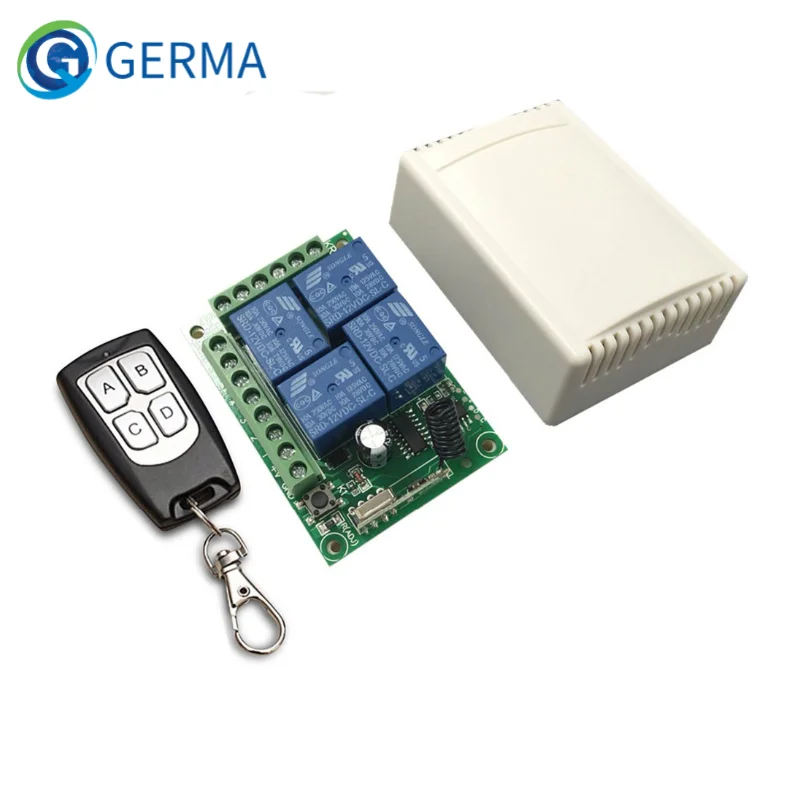 A powerful processor with all the latest digital decoders like Dolby Digital EX and DTS, gives the RX-D206B the versatility you need to enhance your listening experience.
A powerful processor with all the latest digital decoders like Dolby Digital EX and DTS, gives the RX-D206B the versatility you need to enhance your listening experience.
Combining 110 Watts per channel performance with 7.1-channel surround sound and all the A/V inputs/outputs you are likely to need. RX-D206B makes it easy to connect all your analog and digital components. With the JVC exclusive DAP sound field, Virtual Surround Sound capability, A/V CompuLink, USB for connecting your computer, and more, RX-D206B is great for those interested in an affordable, powerful home theater receiver with plenty of features to incorporate all your A/V equipment.
This receiver is equipped with the top digital audio decoder formats.
Without adding a surround back speaker, this receiver has the ability to play a virtual 7.1 channels.
After inputting the number of speakers and the room size, the receiver has all the information it needs to set up your home theater for optimum audio performance.
If you only have room for two classic stereo speakers, you can still enjoy dramatic home theater sound with 3D-phonic mode.
This highly readable, classic display is pleasant to look at and easy to use.
High-performance DSP (Digital Signal Processor) and high-capacity memory allows for multi-channel surround sound that simulates the precise ambiance of theaters and halls.
One of the first receivers with a built-in USB port for connecting laptop and other digital devices.
The Compu Link remote control system lets you operate any JVC audio/video component from this receiver with ease. For example, upon putting in a VHS cassette, your TV and receiver automatically powers on and switches to the proper settings.
You can control all your audio and video equipment with the included remote.
In the Box
- JVC RX-D206B 110 Watts per Channel x7 Built-in Dolby Digital EX, DTS-ES and Dolby Pro-Logic IIx, AM/FM Tuner, USB Input, Home Theater Receiver (Black)
- Multibrand A/V Remote Control
- AM Loop Antenna
- FM Wire Antenna
- 1-Year Parts, 90 Days Labor Warranty
- Description
- Dolby EX, Pro Logic IIx, DTS-ES, DTS Neo:6, DTS 96/24 Compatibility
- Virtual Surround Back
- Quick Setup
- 3D-phonic Virtual Surround
- Dot Matrix Fluorescent Display
- Digital Acoustic Processor (DAP)
- USB Digital Input
- Compu Link/AV Compu Link
- Multibrand A/V Remote Control
JVC RXD206B Specs
| Amplifier | |
| Stereo RMS Power | 110 Watts per channel, 0.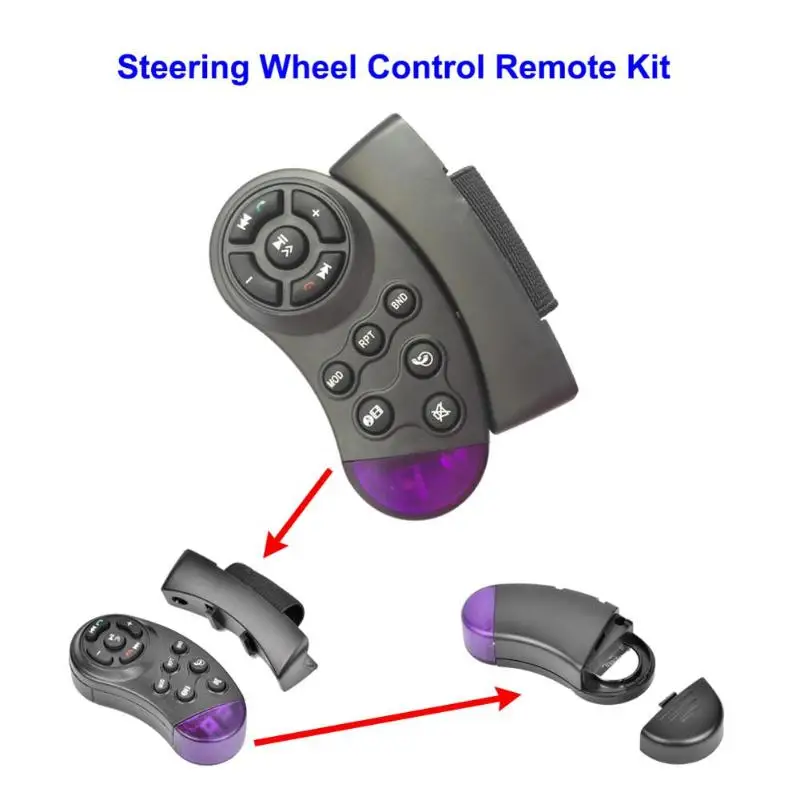 8% THD, 20 Hz-20 KHz, 6 ohms 8% THD, 20 Hz-20 KHz, 6 ohms |
| Surround RMS Power | 110 Watts per channel, 0.8% THD, 1 KHz, 6 ohms |
| No. of Channels | 7.1 |
| Audio Processing | |
| Dolby Digital | Yes |
| Dolby Digital EX | Yes |
| Dolby Pro Logic II | Yes |
| DTS | Yes |
| DTS ES | Yes |
| DTS Neo:6 | Yes |
| THX Surround EX | No |
| THX Certified | No |
| Convenience | |
| Speaker Selector | Not Specified |
| Multi Room/Source | No |
| AM/FM Tuner | Yes, with 30 FM and 15 AM presets |
| FM Sensitivity | Not Specified |
| Remote Control | Multibrand A/V-STB Remote |
| Connectors | |
| Analog Inputs | Audio RCA: x4 S-Video: x3 Composite A/V: 3x Component Video: 2x |
| Digital Inputs | Coaxial Audio: x1 Optical Audio: x2 USB: x1 |
| Analog Outputs | Audio RCA: x2 7-Channel Speaker: Banana Clips Component Video: x1 Composite A/V RCA: x3 Headphone Jack: x1 S-Video: x2 |
| Digital Outputs | No |
| Other Ports | AV Compu Link |
| Video Input Conversion | No |
| General | |
| Power Requirements | AC 110, 60 Hz |
| Dimensions | 17. 2 x 3.6 x 14.2″ (43.5 x 9.2 x 36cm) 2 x 3.6 x 14.2″ (43.5 x 9.2 x 36cm) |
| Weight | 14.8 lbs (6.7 kg) |
| Warranty | 1-Year Parts, 90 Days Labor |
Packaging Info
| Package Weight | 19 lb |
JVC RXD206B Reviews
See any errors on this page? Let us know
YOUR RECENTLY VIEWED ITEMS
JVC RX-6030V / RX-6032V (Black) Home theater receiver with Dolby Digital, DTS, and Pro Logic II at Crutchfield
Home theater receiver with Dolby Digital, DTS, and Pro Logic II (Black)
Item # 257RX6030V
Home theater power and flexibility are yours with this JVC receiver! It teams up 100 watts x 5 with built-in. ..
..
JVC RX-6030V / RX-6032V — RX-6030V (black)
JVC RX-6030V / RX-6032V — Back
JVC RX-6030V / RX-6032V — Remote
JVC RX-6030V / RX-6032V — RX-6032V (silver)
Home theater power and flexibility are yours with this JVC receiver! It teams up 100 watts x 5 with built-in…
Discontinued item
Item # 257RX6030V
Shop all JVC Home Theater Receivers
- Overview
- Reviews
- Details
- Accessories
- Q&A
- Articles
Former Crutchfield staff writer Barry Montgomery studied English and psychology at Indiana University and received a master’s degree in English literature from the University of Virginia.
Home theater power and flexibility are yours with this JVC receiver! It teams up 100 watts x 5 with built-in Dolby® Digital and DTS® decoding to surround you with cinematic sound. Pro Logic® II lets you turn any stereo or Dolby Surround source into convincing 5.1 audio. The multibrand remote controls your other components, and A/V CompuLink simplifies operation with compatible JVC A/V gear.
Pro Logic® II lets you turn any stereo or Dolby Surround source into convincing 5.1 audio. The multibrand remote controls your other components, and A/V CompuLink simplifies operation with compatible JVC A/V gear.
KEEP READING
Home theater power and flexibility are yours with this JVC receiver! It teams up 100 watts x 5 with built-in Dolby® Digital and DTS® decoding to surround you with cinematic sound. Pro Logic® II lets you turn any stereo or Dolby Surround source into convincing 5.1 audio. The multibrand remote controls your other components, and A/V CompuLink simplifies operation with compatible JVC A/V gear.
This model offers digital and analog inputs for DVD, CD, VCR, TV sound, and more. You even get HDTV-compatible component video switching for 2 sources. A 5.1-channel analog input lets you plug in a DVD-Audio or SACD player and immerse yourself in high-resolution, multichannel music. Five DAP (Digital Acoustics Processor) soundfields bring your stereo sources to life.
Details:
- Dolby Digital, DTS, Dolby Pro Logic II
- 100 watts x 2 (stereo) into 8 ohms (40-20,000 Hz) at 0.8% THD or 100 x 5 in surround mode
- JVC AV CompuLink
- subwoofer output
- 5 DAP modes
- component video switching (2 in, 1 out, 35MHz bandwidth)
- digital inputs: 1 optical, 1 coaxial
- 3 audio, 2 A/V inputs (including 2 S-video and one 5.1-channel)
- no phono input
- 1 set main speaker outputs
- fluorescent front-panel display with dimmer
- multibrand-for-video remote
- 30 FM/15 AM presets
- 17-1/16″W x 5-13/16″H x 17-1/16″D
- warranty: 2 years
READ LESS
What’s in the box:
JVC RX-6030V / RX-6032V owner’s manual
- AM/FM/Dolby Digital/DTS receiver
- RM-SRX6030J Wireless remote control
- 2 «AA» batteries
- AM Loop antenna
- FM wire antenna
- Instructions
- Product Registration Card/Questionnaire
- Important Products Safety Instruction
- Errata sheet
MFR #RX6030VBK
Loading reviews. ..
..
JVC RX-6030V / RX-6032V reviews
Average review:
2 reviews
Thanks for submitting your review
Most reviews are processed and published within 5 business days. You will receive a confirmation email once your review has been published.
Thank you for submitting your review!
It may take up to a week for your review to appear.
Filter by rating
Customer photos
Sort reviews
Verified customer (What’s this?)
Verified employee purchase (What’s this?)
Pros:
Cons:
Helpful?
<< >>
Details
Researched by Crutchfield’s Stacey B.
|
Amplification |
||
|---|---|---|
| Number Of Channels |
— |
|
| Stereo RMS Power (watts) |
— |
|
| THD in Stereo |
— |
|
| Frequency Bandwidth (stereo) |
— |
|
| Minimum Impedance L/R |
8 ohms |
|
| Minimum Impedance Center |
8 ohms |
|
| Minimum Impedance Surround |
8 ohms |
|
|
General Features |
||
| Bluetooth |
No |
|
| Apple AirPlay |
— |
|
| Alexa-compatible |
No |
|
| Google Assistant-compatible |
No |
|
| Chromecast built-in |
No |
|
| DTS Play-Fi |
No |
|
| App Remote Control |
No |
|
| On-Screen Display |
No |
|
| Auto Speaker Calibration |
— |
|
|
Multi-room Audio/Video |
||
| Powered Multi-room Audio Output |
No |
|
| Preamp Multi-room Audio Output |
No |
|
| Multi-room HDMI Output |
No |
|
| Total Number of Zones |
1 |
|
| Playback from Digital Audio Inputs |
No |
|
| Playback from Streaming Sources |
No |
|
|
Surround Processing |
||
| Dolby Digital |
Yes |
|
| Dolby Atmos |
N/A |
|
|
Dolby Atmos Height Virtualization |
— |
|
| DTS |
Yes |
|
| DTS:X |
— |
|
|
DTS Virtual:X |
— |
|
|
Inputs & Outputs |
||
| Phono Input |
No |
|
| Audio-Video Inputs |
2 |
|
| Audio-only Inputs |
3 |
|
|
Component Video Inputs |
2 |
|
| Component Video Monitor Outputs |
1 |
|
| Optical Digital Inputs |
1 |
|
| Coaxial Digital Inputs |
1 |
|
| Optical Digital Outputs |
None |
|
| Coaxial Digital Outputs |
None |
|
|
Number of HDMI Inputs |
— |
|
| HDMI Monitor Outputs |
— |
|
| Subwoofer Outputs |
1 |
|
| Discrete Subwoofer Outputs |
No |
|
| Multi-Channel Analog Input |
No |
|
| Multi-channel Preamp Output |
No |
|
| Main Speaker Output Pairs |
Clips |
|
| Main Speaker Terminals |
Clips |
|
| Ethernet Port |
— |
|
| USB Connections |
None |
|
|
Removable Power Cord |
— |
|
| Supports Wireless Rear Speakers |
No |
|
|
HDMI Features |
||
|
HDMI Version |
— |
|
| VRR (Variable Refresh Rate) |
No |
|
| ALLM (Auto Low Latency Mode) |
No |
|
| 4K/120Hz-Capable Inputs |
No |
|
| Audio Return Channel |
No |
|
| Video Upscaling |
No |
|
|
HDR (High Dynamic Range) Support |
||
| HDR10 |
No |
|
| HDR10+ |
No |
|
| HLG |
No |
|
| Dolby Vision |
No |
|
|
Other Specs |
||
| FM Sensitivity |
12. 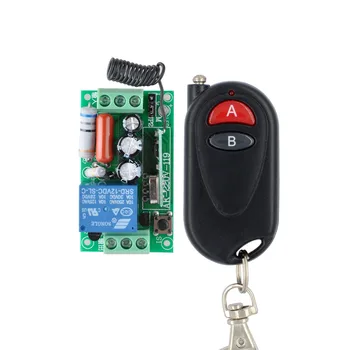 8 dBf 8 dBf
|
|
| Multibrand Remote Control |
— |
|
| Learning Remote |
No |
|
| Width (inches) |
17.0625 |
|
| Height (inches) |
5.769 |
|
| Depth (inches) |
17. 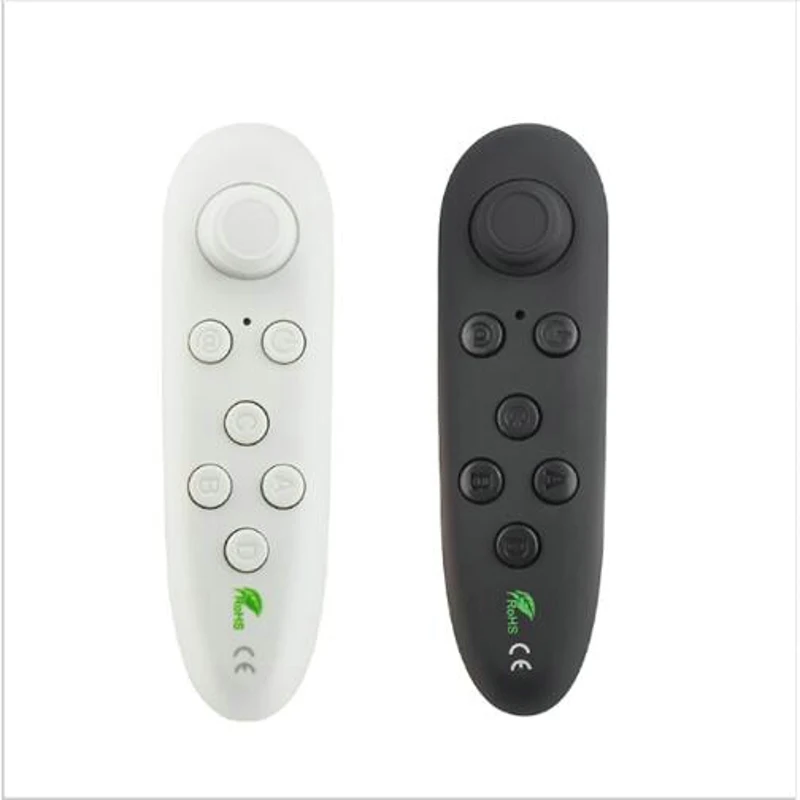 0625 0625
|
|
| Weight (pounds) |
— |
|
| Parts Warranty |
2 Years |
|
| Labor Warranty |
2 Years |
|
The JVC RX-6030V / RX-6032V replaces these items:
- JVC RX-6020VBK
Product Research
Features
Remote Control
Inputs and Outputs Notes
Features
HD Component Video Switching: In
addition to composite and S-video switching, this unit can switch between two
component video sources. There are 2 component video inputs and 1 component
There are 2 component video inputs and 1 component
video output; each input and output has female RCA jacks labeled «Y»,
«PB» and «PR». This feature allows you to connect, and
switch between, high resolution video sources equipped with component video
outputs. These connections have a wide bandwidth (35 MHz) compatible with HDTV
sources.
Surround
Modes: This receiver incorporates a
wide variety of surround modes to bring you maximum enjoyment from your audio
and video software. The surround modes include:
- Dolby Digital
- Dolby Pro Logic II (Movie and
Music) - DTS
- Live Club
- Dance Club
- Hall
- Pavilion
- All channel stereo
Input Attenuator: You
can attenuate an analog input signal if it is too high and causes distortion.
Digital Input Registration:
When you use any of the digital inputs, you must register which source is
connected to which digital input. This only needs to be done one time, and
This only needs to be done one time, and
afterwards, the unit will automatically be able to select the proper source in
both digital and analog mode.
Crossover: The
channels set to «Small» using bass management are filtered with a selectable high-pass crossover.
You can select a crossover point of 80Hz, 100Hz, 120Hz, 150Hz or 200Hz.
LFE Attenuator: When the bass
is distorted, you can lower LFE bass output by 10dB.
Dynamic Range Compression:
You can choose a Dynamic Range Compression setting of «Mid»,
«Max» or «Off». The «Mid» setting compresses the dynamic
range very little, whereas the «Max» setting offers full dynamic range
compression.
Note: Dynamic Range Compression mode is only available
when specially encoded Dolby Digital signals are played.
Sleep Timer: This
unit is equipped with a sleep timer that will automatically turn the unit off.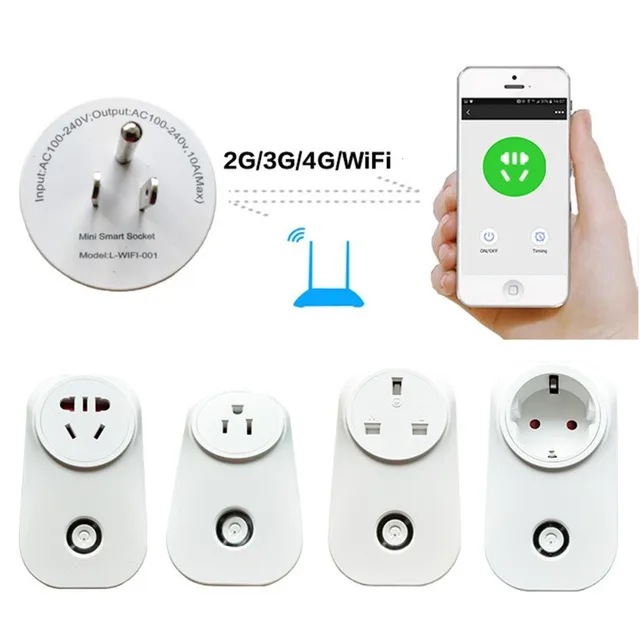
The sleep timer can be adjusted from 10 to 90 minutes in 10 minute increments.
Dimmer: The display can be
dimmed for night use.
Remote Control
RM-SRX6030J IR Wireless
Remote: The remote controls JVC audio/video components (CD players,
cassette decks, CD
recorders, TVs, VCRs and DVD players) and it is
pre-programmed to control most popular brands of TVs, cable
boxes, VCRs, and DVD players.
Compu Link: JVC’s
exclusive Compu Link Remote Control System allows you to control other JVC
audio/video components through the remote sensor of the receiver. Other benefits
of connecting other JVC components to the Compu Link system include automatic
source selection, automatic power on/off and synchronized recording. This receiver’s remote input cable connections include Compu
Link-4 (synchro) and A/V Compu Link-III.
Inputs and
Outputs Notes
Headphone Jack: This unit has a
gold-plated standard 1/4″ headphone jack on the front panel.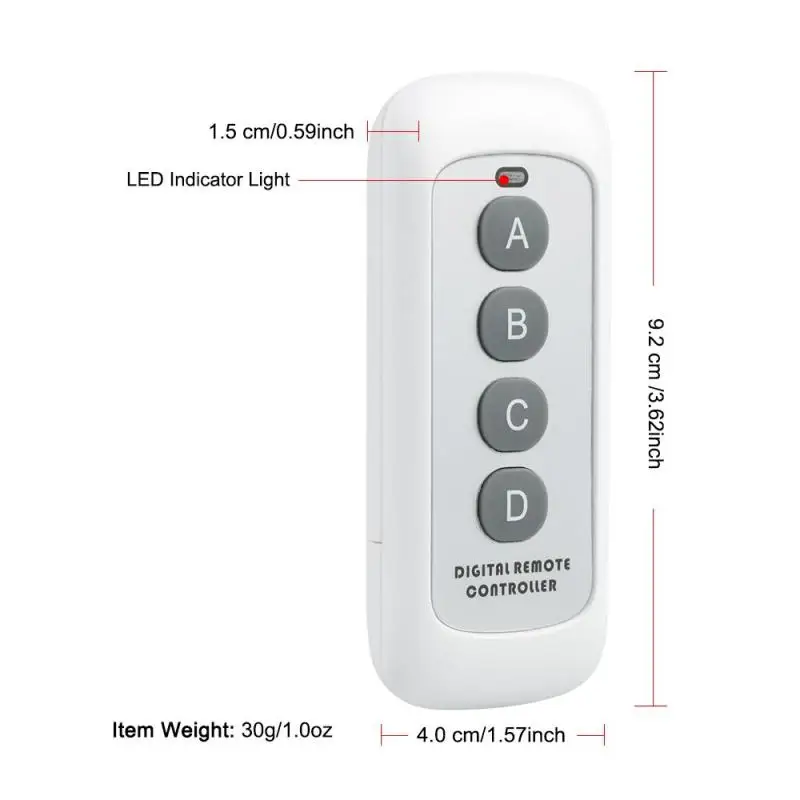
DVD/5.1-Channel Input: The
Audio/Video input labeled «DVD» combines the DVD analog input with the
multi-channel input for an external decoder. If you are connecting a DVD player
using the stereo analog inputs, you should use the Front Left and Right RCA
jacks of this input. If you are connecting an external 5.1-channel decoder or a
DVD player with built-in Dolby Digital (and/or DTS) decoding, you should use all
6 RCA jacks (Front L+R, Surround L+R, Center and Subwoofer). In addition to the
6 audio input jacks, there are composite and S-Video jacks.
The JVC RX-6030V / RX-6032V replaces these items
Adding…
JVC RX-6020VBK
A/V receiver with Dolby Digital, DTS, and Dolby Pro Logic II
- 100 watts x 5
- DTS, Pro Logic II and Digital Acoustics Processor modes
- 5.
 1-channel input
1-channel input
Loading accessories…
Loading articles…
JVC Remote on the App Store
iPhone Screenshots
Description
Check here for the supported JVC receivers.
www.jvc.net/car/app/jvc_remote/compatible.html
JVC Remote is an application that connects and controls compatible JVC car receivers via Bluetooth® like a wireless remote control.
This application can also display JVC car receiver’s source information on the smartphone’s screen,
and enables the user to make an audio setting using application’s easy to use graphic user interface.
Application can also work as a free standalone music player application, when the unit is not connected to the headunit.
INNOVATIVE GESTURE CONTROL
You can command basic controls such as pause, skip or repeat simply by finger gesture operations on the screen of the smartphone.
Also, you can make a search for a specific song, album or an artist from your playlist.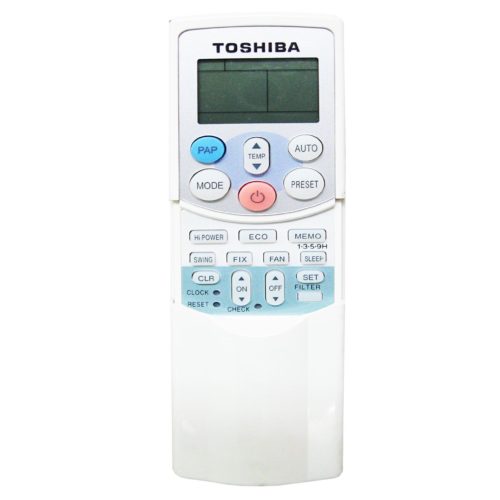
RECEIVER SETTING USING SMARTPHONE GUI
Audio settings, such as Time Alignment and EQ setting can be easily be set using the JVC Remote application’s easy to use graphic user interface.
Note: Depends on the model.
KEY FEATURES
・Remote Control Function (by Gesture Control or by Remote Control Screen)
・Standalone Music Player
・Receiver Setting(Depends on the model)
・Display Receiver Information
CAUTION
Do not operate any functions that takes your attention away from safe driving.
System requirements: iOS8.0 and above
Version 1.8.7
This app has been updated by Apple to display the Apple Watch app icon.
— Added support for new models
Ratings and Reviews
107 Ratings
A first hack.

This app seems like the first attempt to connect a phone to the stereo. There is no need for the app in its current state, however. The main feature is that you can play music via Bluetooth on the stereo — but before the app, I was able to easily do that using iTunes and the existing Bluetooth connection. Also, with the app you get a message saying there is a connection error (even though it is correctly connected). I’m happy with how iTunes and Bluetooth work together, so no need for this app. I was hoping that the app would provide a nice GUI where I could go and adjust all of the settings on my stereo. Pushing the volume knob to cycle through menus is tedious, so I see the potential of having an app that lets you adjust all of the menus with a much better interface. It would be nice to use the phone to set up radio presets (especially the 2nd and 3rd layer settings). Unfortunately, the app does not have any functionality at this time except for playing music — which already exists with iTunes.
I’ll keep looking for updates and adjust my review if the app starts delivering features that improve the functionality of the stereo.
Waste of time
Just got a new JVC receiver the other day. Saw on the box that there was an app I could use to control it. “Sweet!” I thought. Well I was wrong. The app doesn’t always like to connect or is slow at it or gives you an error but still connects. The app has the options to pretty much do whatever the receiver allows you to do but way easier to navigate. Just one problem… It doesn’t work. I was able to skip songs, change volume/modes and EQ presets. But that was also when it wanted to work and let me do those things. Never was able to actually change the EQ settings since the buttons never worked to tune it. So overall it’s a pointless app right now so download it if you’re looking to get frustrated.
Seems like an issue at 1st but it’s not awful
I struggled too at first, it wouldn’t connect.
Then I read the error message FULLY. Forget about turning your car off and on. That’s not the issue, and it doesn’t work. The issue that they don’t mention directly is that you need the car stereo set to a certain mode. Make sure the source is: IPOD BT. It can’t just be on Bluetooth it won’t recognize what you’re doing. Since I’ve done that. I’ve been able to get in the car, wait about 5-10 seconds to pair with stereo while I get my seatbelt on, turn on the app, (which I went to preferences and made sure it vibrates on sync so I know right away if it’s connecting) and It connects within seconds in the IPOD BT mode. The vibrate gives you more easy that you’re connecting. Then you can adjust the settings and little more easier. As for the makeup of the app and what it can do. It’s like a generic remote control it gets the job done.
The developer, JVCKENWOOD Corporation, has not provided details about its privacy practices and handling of data to Apple.
No Details Provided
The developer will be required to provide privacy details when they submit their next app update.
Information
- Seller
- JVCKENWOOD Corporation
- Size
- 16.8 MB
- Category
-
Music
- Age Rating
- 4+
- Copyright
- © 2016 JVCKENWOOD Corporation
- Price
- Free
-
Developer Website
-
App Support
More By This Developer
You Might Also Like
Cybersecurity, Technology News and Support
BleepingComputer | Cybersecurity, Technology News and Support
-
Technology
3D Printed Food? Israeli company unveils cultured steak, beef morsels
Craving your next serving of steak? These 3D-printed and sumptuous beef morsels may have you surprised.
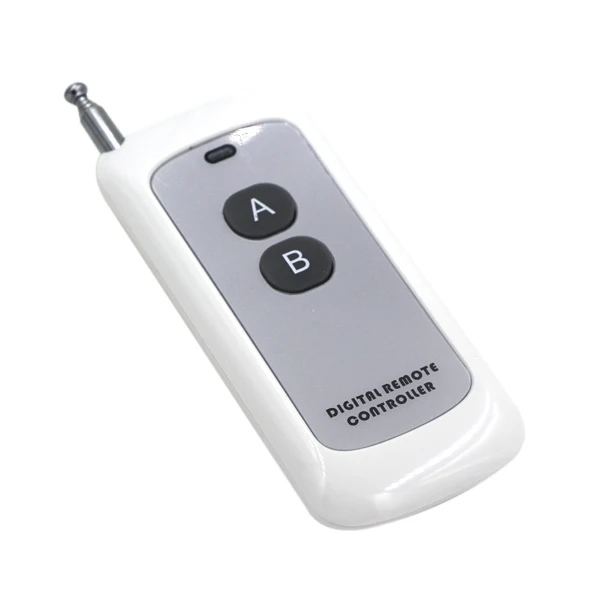 This Israeli company is on a mission to mass produce cultured beef—that is real beef but not sourced from killing a cow, that further undergoes 3D printing.
This Israeli company is on a mission to mass produce cultured beef—that is real beef but not sourced from killing a cow, that further undergoes 3D printing.- Ax Sharma
- September 15, 2022
- 12:48 PM
-
Security
Zoom outage left users unable to sign in or join meetings
The Zoom video conference platform was down and experienced an outage preventing users from logging in or joining meetings.
- Sergiu Gatlan
- September 15, 2022
- 11:35 AM
-
Security
Russian hackers use new info stealer malware against Ukrainian orgs
Russian hackers have been targeting Ukrainian entities with previously unseen info-stealing malware during a new espionage campaign that is still active.
- Ionut Ilascu
- September 15, 2022
- 10:38 AM
-
Microsoft
Microsoft: Windows 10 21h2 reaches end of service in December
Microsoft has reminded customers that all editions of Windows 10, version 21h2 will reach the end of service (EOS) in three months, on December 13, 2022.

- Sergiu Gatlan
- September 15, 2022
- 10:15 AM
-
Deals
Protect your privacy with this Windscribe VPN Pro deal
Your privacy is important, and being able to chat, shop, and work online with confidence is crucial to daily life. Windscribe makes that simple with three options: Get a one-year plan for $39, saving 43%; get two years of protection online for $59 and save 57%; or save 66% on a three-year Windscribe plan for $69.
- BleepingComputer Deals
- September 15, 2022
- 07:12 AM
-
Security
Webworm hackers modify old malware in new attacks to evade attribution
Chinese cyberespionage hackers of the ‘Webworm’ group are undergoing experimentation, using modified decade-old RATs (remote access trojans) in the wild.
- Bill Toulas
- September 15, 2022
- 06:00 AM
-
Security
FBI: Hackers steal millions from healthcare payment processors
The Federal Bureau of Investigation (FBI) has issued an alert about hackers targeting healthcare payment processors to route payments to bank accounts controlled by the attacker.

- Ionut Ilascu
- September 14, 2022
- 06:54 PM
-
Microsoft
Microsoft 365 now auto-updates apps on locked or idle devices
Microsoft says customers will see fewer Microsoft 365 update notifications because Office apps will update automatically while their computers are locked or idle.
- Sergiu Gatlan
- September 14, 2022
- 03:29 PM
-
Security
Gay hookup site typosquatted to push dodgy Chrome extensions, scams
Gay hookup and cruising web app Sniffies is being impersonated by opportunistic threat actors hoping to target the website’s users with many typosquatting domains that push scams and dubious Google Chrome extensions. In some cases, these illicit domains launch the Apple Music app prompting users to buy a subscription.
- Ax Sharma
- September 14, 2022
- 02:15 PM
-
Deals
Put 4K on a 120″ screen with this portable projector deal
Sharing video is becoming more important for professional reasons as well as personal enjoyment.
 This light, portable projector makes it easy to do both for $121.99, down from the $199.99 regular price.
This light, portable projector makes it easy to do both for $121.99, down from the $199.99 regular price.- BleepingComputer Deals
- September 14, 2022
- 02:05 PM
-
Security
Death of Queen Elizabeth II exploited to steal Microsoft credentials
Threat actors are exploiting the death of Queen Elizabeth II in phishing attacks to lure their targets to sites that steal their Microsoft account credentials.
- Sergiu Gatlan
- September 14, 2022
- 01:52 PM
-
Security
New Lenovo BIOS updates fix security bugs in hundreds of models
Chinese computer manufacturer Lenovo has issued a security advisory to warn its clients about several high-severity vulnerabilities impacting a wide range of products in the Desktop, All in One, Notebook, ThinkPad, ThinkServer, and ThinkStation lines.
- Bill Toulas
- September 14, 2022
- 01:43 PM
-
Security, Apple, Microsoft
CISA orders agencies to patch Windows, iOS bugs used in attacks
CISA added two new vulnerabilities to its list of security bugs exploited in the wild today, including a Windows privilege escalation vulnerability and an arbitrary code execution flaw affecting iPhones and Macs.

- Sergiu Gatlan
- September 14, 2022
- 12:48 PM
-
Security
US govt sanctions ten Iranians linked to ransomware attacks
The Treasury Department’s Office of Foreign Assets Control (OFAC) announced sanctions today against ten individuals and two entities affiliated with Iran’s Islamic Revolutionary Guard Corps (IRGC) for their involvement in ransomware attacks.
- Sergiu Gatlan
- September 14, 2022
- 11:43 AM
-
Security
Microsoft Teams stores auth tokens as cleartext in Windows, Linux, Macs
Security analysts have found a severe security vulnerability in the desktop app for Microsoft Teams that gives threat actors access to authentication tokens and accounts with multi-factor authentication (MFA) turned on.
- Bill Toulas
- September 14, 2022
- 11:40 AM
-
Security
Phishing page embeds keylogger to steal passwords as you type
A novel phishing campaign is underway, targeting Greeks with phishing sites that mimic the state’s official tax refund platform and steal credentials as they type them.

- Bill Toulas
- September 14, 2022
- 11:30 AM
-
Security
Sponsored Content
Securing your IoT devices against cyber attacks in 5 steps
How is IoT being used in the enterprise, and how can it be secured? We will demonstrate important security best practices and how a secure password policy is paramount to the security of devices.
- Sponsored by Specops
- September 14, 2022
- 10:06 AM
-
Security
Chinese hackers create Linux version of the SideWalk Windows malware
State-backed Chinese hackers have developed a Linux variant for the SideWalk backdoor used against Windows systems belonging to targets in the academic sector.
- Ionut Ilascu
- September 14, 2022
- 08:07 AM
-
Deals
Learn new cybersecurity and IT skills with this certification bundle deal
Cybersecurity and IT evolve relentlessly, and honing your skills can help you evolve with them.
 The eleven courses in this bundle teach you new skills for $49.99, 97% off the $2189 MSRP.
The eleven courses in this bundle teach you new skills for $49.99, 97% off the $2189 MSRP.- BleepingComputer Deals
- September 14, 2022
- 07:27 AM
-
Security
Hackers now use ‘sock puppets’ for more realistic phishing attacks
An Iranian-aligned hacking group uses a new, elaborate phishing technique involving multiple personas and email accounts to lure targets into opening malicious documents.
- Bill Toulas
- September 13, 2022
- 05:23 PM
View More
Using Remote Desktop
Windows 11 Windows 10 More…Less
Use Remote Desktop on a Windows, Android, or iOS device to remotely connect to a Windows 10 PC. Here’s how to set up your PC to allow remote connections, and then connect to the configured PC.
Note: While the Remote Desktop server (for example, computer, to to which you are connecting) must be running a version of Windows Pro, the client computer (device with to which you are connecting) can be running any version of Windows (Pro or Home).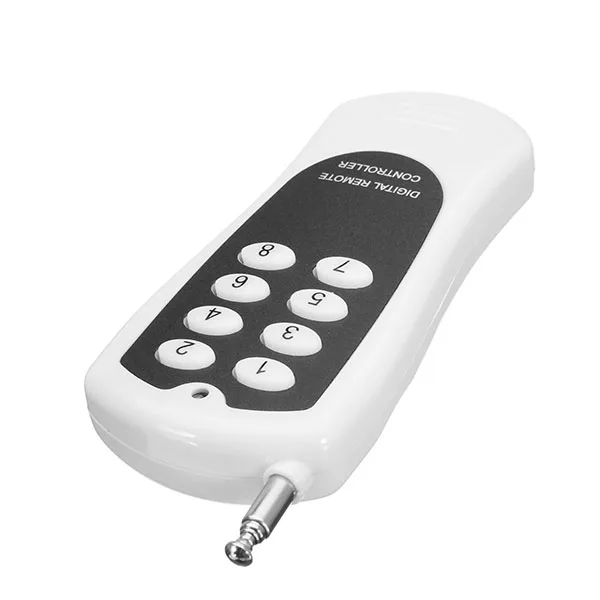 or even another operating system.
or even another operating system.
-
Enable remote connections on the computer to which you want to connect.
-
Make sure you have Windows 11 Pro installed. To check this, select Start and open Settings . Then, under System , select About , and under Windows Features , look for Edition . To learn how to get Windows 11 Pro, see Upgrade from Windows Home to Windows Pro.
-
When you’re ready, press Start and open Settings . Then, under System , select Remote Desktop , set Remote Desktop to Enable , then select Confirm .

-
Record the name of this computer in the field Computer name . It will be needed later.
-
-
Use Remote Desktop to connect to a configured computer.
-
On a local Windows machine: In the search box on the taskbar, type Remote Desktop Connection and select Remote Desktop Connection . In the Remote Desktop Connection window, enter the name of the computer you want to connect to (from step 1), and then click Connect .
-
Enable remote connections on the computer to which you want to connect.
-
Make sure you have Windows 10 Pro installed. To check this, go to Start > Settings > System > System and search for Issue .
 To learn how to get Windows 10 Pro, see Upgrade from Windows 10 Home to Windows 10 Pro.
To learn how to get Windows 10 Pro, see Upgrade from Windows 10 Home to Windows 10 Pro. -
When you’re ready, select Start > Settings > System > Remote Desktop , and select Enable Remote Desktop .
-
Note the computer name in section How to connect to this PC . It will be needed later.
-
-
Use Remote Desktop to connect to a configured computer.
-
On a Windows, Android, or iOS 9 device0008 Open the Remote Desktop app (free download from the Microsoft Store, Google Play, and Mac App Store) and add the name of the computer you want to connect to (see step 1). Select the remote computer name you added and wait for the connection to complete.
-
-
Enable Remote Desktop
10 free programs for remote access to a computer
January 18, 2021LikbezTekhnologii
With their help, you can solve the technical problems of loved ones or use the resources of devices at a distance.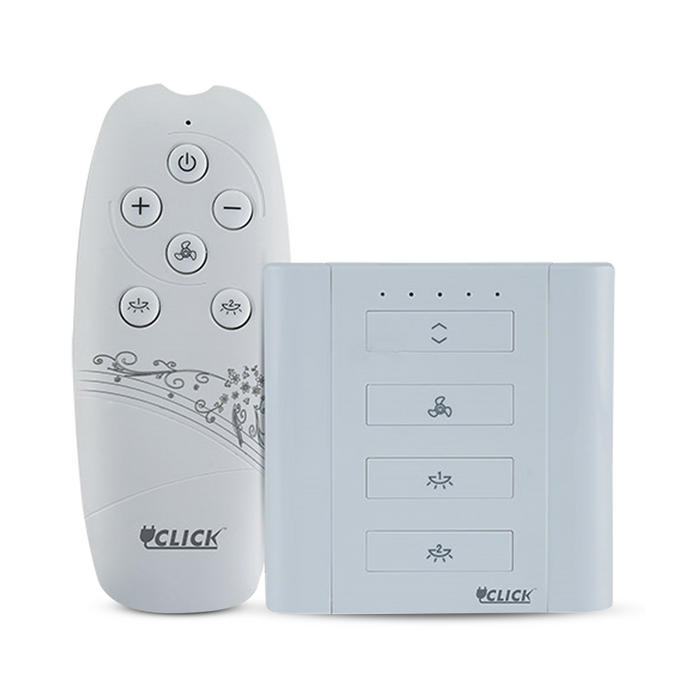
Share
0
These programs allow you to control your PC from other computers or mobile devices via the Internet. Having received remote access to the device, you can control it as if it were nearby: change settings, run installed applications, view, edit and copy files.
In the article, you will see terms such as «client» and «server».
A client is any device (PC, tablet or smartphone), and a server is a remote computer to which it connects.
1. Remote Assistance (Microsoft Remote Assistance)
- Which platforms can be connected: Windows.
- From which platforms you can connect: Windows.
«Remote Assistance» is a utility built into Windows that allows you to quickly connect computers to each other without third-party programs. This method does not allow you to share files. But at your service full access to a remote computer, the ability to collaborate with another user and text chat.
Server instruction
- Run the utility. To do this, type «Remote Assistance» in the search system. If you have Windows 10, search for MsrA. Right-click on the found item and select «Run as administrator».
- In the window that opens, click «Invite someone you trust to help.» If the system reports that the computer is not configured, click «Fix» and follow the prompts. You may need to restart the utility after changing the settings.
- When the assistant prompts you to select an invitation method, click Save invitation as file. Then enter its name, storage folder and confirm file creation.
- When the file appears in the specified location, a password window will be displayed on the screen. Copy the password and send it along with the file to the client by mail or in any other way.
- Wait for the connection request from the client and approve it.
Customer instructions
- Open the file generated by the server and enter the received password.
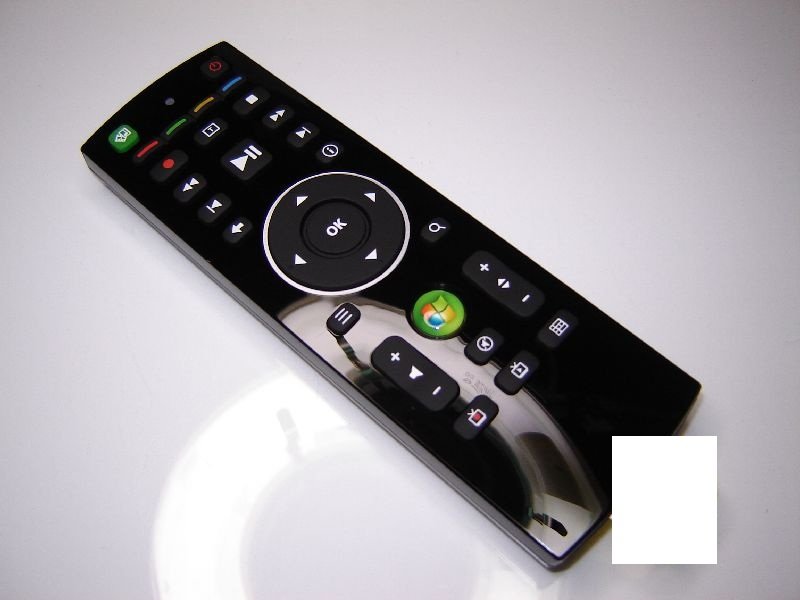 After that, you will see the screen of the remote computer and will be able to observe it in a special window.
After that, you will see the screen of the remote computer and will be able to observe it in a special window. - To manage the files and programs of someone else’s computer as if you were next to it, click on the top menu «Request control» and wait for a response from the server.
The file and password are one-time use and will not work for the next session.
2. Remote Desktop (Microsoft Remote Desktop)
- Platforms you can connect to: Windows (Professional, Enterprise and Ultimate editions only).
- Connectable platforms: Windows, macOS, Android and iOS.
This tool is another built-in Windows program for remote access. It differs from the previous one primarily in that the computer acting as the server cannot be used during the connection: its screen is automatically blocked until the end of the session.
But the client can be Mac and even mobile devices. In addition, a connected user can copy files from a remote computer via a shared clipboard.
To use Remote Desktop, the server must be configured correctly. This will take you some time. But if you don’t want to deal with IP addresses and network ports, you can use other programs from this article. They are much easier.
Server manual
- Enable the «Remote Desktop» feature. In Windows 10, this can be done in Settings → System → Remote Desktop. In older versions of the OS, this setting may be in a different location.
- Find out your local and public IP addresses, for example using the 2IP service. If another person manages the client device, tell him the public IP, as well as the username and password from your Windows account.
- Configure port forwarding on the router (port forwarding or port forwarding). This feature makes your computer accessible to other devices via the Internet. The setup process on different routers is different, you can find instructions for your model on the manufacturer’s website.
In general terms, the actions are as follows.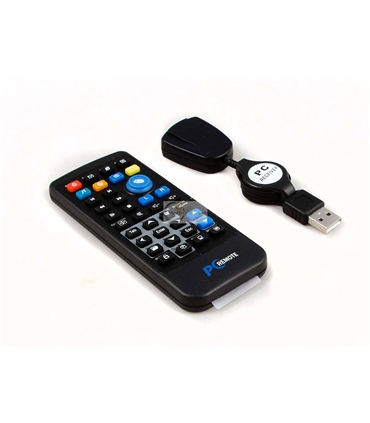 You go to a special section of the router settings and create a virtual server, specifying the local IP address and port 3389 in its parameters.
You go to a special section of the router settings and create a virtual server, specifying the local IP address and port 3389 in its parameters.
Opening access to a computer through port forwarding creates new loopholes for network attacks. If you are afraid of the intervention of intruders, think again whether it is worth using this particular method.
Instructions for the client
- Type «Remote Desktop Connection» in the system search and run the found utility. Or press the Win + R keys, enter the command
mstscand press Enter. - In the window that opens, enter the public IP address of the computer that acts as the server. Then enter the login and password from his Windows account.
After that, you will have full control over the desktop of the remote computer.
Download
Price: Free
Download
Price: Free
Download
Price: Free
3.
 Screen Sharing
Screen Sharing
- Platforms you can connect to: macOS.
- Platforms you can connect to: macOS.
Perhaps the easiest way to establish a remote connection between two Mac computers is to do it using the standard macOS Screen Sharing app. You don’t need third-party utilities for this.
To connect to a remote computer, you need to search Spotlight for «Screen Sharing» and run this program. In the window that appears, type the Apple ID of the remote computer or its username, if it is in the contact list on the current Mac. After that, it remains only to send a connection request.
When prompted, the server-side user can choose to allow full control of their computer and its contents, or only passive monitoring.
4. Chrome Remote Desktop
- What platforms can be connected: Windows, macOS, Linux.
- From which platforms you can connect: Windows, macOS, Linux, Android, iOS.

Chrome Remote Desktop is a very simple cross-platform remote access program. Its desktop version is an application for Google Chrome that allows you to manage the entire system without unnecessary settings.
The desktop version of Chrome Remote Desktop displays two menu sections: Remote Access and Remote Support. In the first one, you need to set a name and password to connect to the computer. In the second, you can generate a code for connection (server), also enter a code (client) to connect to a remote PC.
The Chrome Remote Desktop mobile app provides remote access to a computer. At the same time, it is impossible to connect in the opposite direction — from a computer to a mobile device. At the same time, the desktop version can make a computer both a client and a server.
Download
Price: 0
Download
Price: Free
Download
Price: Free
5.
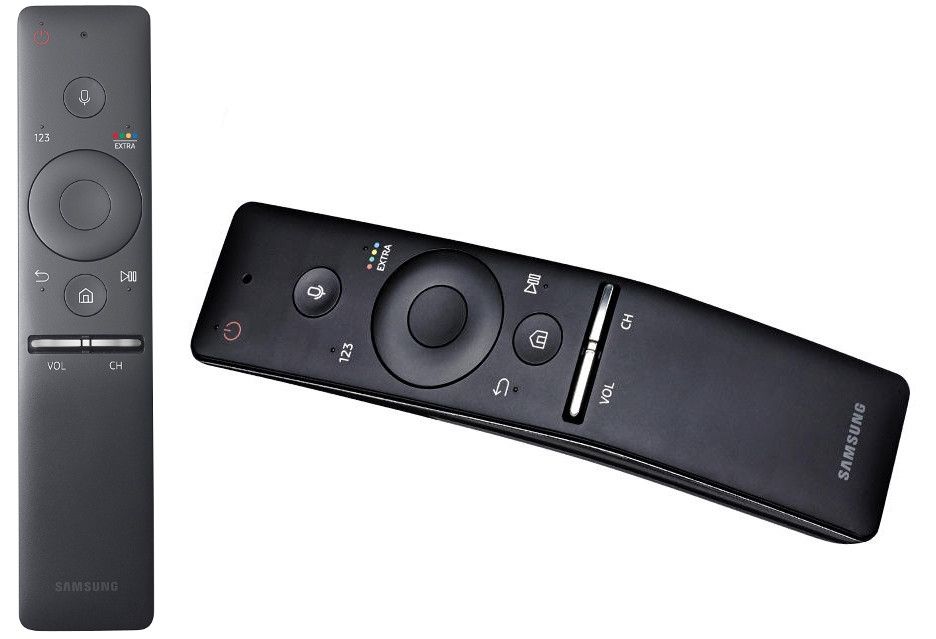 TeamViewer
TeamViewer
- To which platforms can be connected: Windows, MacOS, Linuid.
- From which platforms you can connect: Windows, macOS, Linux, Android, iOS.
TeamViewer can be called one of the most famous programs for creating remote connections. It owes its popularity to its multi-platform support, ease of use, and number of features. Among other things, the program allows you to record sessions on video, communicate with participants in voice and text chats, and open remote access to only selected applications.
To connect two devices, you need to generate an ID and password on the server and enter them on the client side. TeamViewer has a very friendly interface with lots of hints, so it’s very easy to master it.
You can install the full version of the program or use its portable QuickSupport version. The latter does not need to be installed, but does not support all TeamViewer features. In addition, the list of available program functions varies depending on the platforms used.
In addition, the list of available program functions varies depending on the platforms used.
Download
Price: Free
appbox fallback https://apps.apple.com/app/id692035811
Download TeamViewer or QuickSupport for Windows, Linux and macOS →
appbox fallback https://apps. apple.com/app/id661649585
Download
Price: Free
6. Real VNC
- Platforms you can connect to: Windows, macOS, Linux, Raspberry Pi.
- From which platforms can connect: Windows, macOS, Linux, Raspberry Pi, Chrome, Android, iOS.
Another popular program that is available on all key platforms and is highly stable. Like other powerful tools, Real VNC is distributed on a paid basis. However, for home personal use, the application is completely free — the limitation is the limit of five computers and three users.
Real VNC works very simply. You need to install the server part on the computer, set a password and other simple parameters using the step-by-step setup wizard. You can then connect to the server through a client application on your PC or mobile device to view and manage your desktop. File transfer only works between computers, but this feature is not available in the free version.
A powerful tool for remote work that covers all possible tasks and is completely free for non-commercial use. The AnyDesk server part has a portable version and is able to work even without installation.
In addition to being cross-platform, the advantages of the program include ease of connection — you just need to enter a one-time code on the client device and confirm the connection on the server. AnyDesk supports recording of remote sessions, and also has an audio chat and a file transfer function.
AnyDesk →
Download
Price: Free
Download
Price: Free
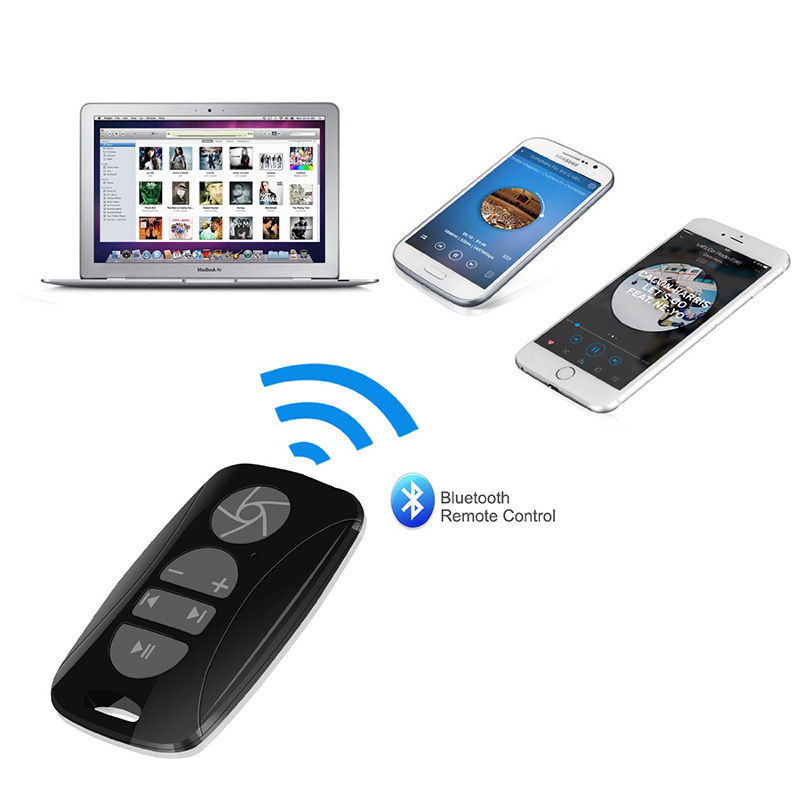
A handy remote computer connection tool that you can use to help friends or simply access your home machine over the Internet. The server part of Remote Utilities is installed only on Windows, but clients are available on all popular platforms.
The connection process is quite simple. In addition to viewing your desktop and managing your computer, Remote Utilities has useful features such as file transfer, session recording, and video chat. The free license allows the use of up to 10 computers, otherwise everything works without restrictions.
Remote Utilities →
Download
Price: Free
Download
Price: Free
0173 Windows.
One of the simplest programs that will allow you to connect to another person’s computer via the Internet for desktop viewing and administration. Works without installing and reconfiguring the router.
Works without installing and reconfiguring the router.
Despite the ascetic interface, it offers a lot of useful features, including transferring files and folders, as well as voice chat for communication. Ammyy Admin allows you to remotely restart your computer, log in and change users. After the initial setup, the application does not even require the presence of a person at the server computer.
Ammyy Admin →
10. AeroAdmin
- What platforms can be connected to: Windows.
- From which platforms you can connect: Windows.
Another simple utility for remote connection to Windows. AeroAdmin works without registration, does not require installation and preliminary settings. For personal use it is free with a limit of up to 17 hours of work per month.
Simply launch AeroAdmin on one computer and then enter the ID and PIN on the other. After confirming the connection request, you can manage the server and share files and other content using the clipboard.
AeroAdmin →
The material was updated on January 18, 2020
Read also ?
- What to do if the computer does not see the internal hard drive0036
- How to set a BIOS password to protect your computer
Free programs for remote computer management / Habr
Remote computer management programs allow you to remotely control another computer via the Internet or on a local network. This is convenient when you need to help a not very experienced user, for example, a relative or friend who is poorly versed in the computer, to do something on it, without leaving his comfortable chair and without wasting his nerves and time on telephone conversations. It is also convenient to use such programs for remote work, for example, from home to connect to the office and vice versa — to access your home PC, for system administration of a whole fleet of computers and servers.
Let’s carry out a comparative analysis of remote control programs, highlight their advantages and disadvantages.
TeamViewer
One of the most popular programs for remote access, it can be quickly downloaded and installed or launched immediately, without installation, even an inexperienced user can handle it. When launched, the program displays a window with an ID and password to access this computer, and TeamViewer allows you to connect to another computer by setting its ID and password.
Benefits:
The program has several basic modes of operation, such as remote control, file transfer, chat, and sharing your desktop. The program allows you to configure round-the-clock access to your computer, it will be convenient for system administration. The speed of work is quite decent, there are versions for all mobile platforms, for various operating systems, which is very pleasing. A simple and understandable interface plus a number of additional utilities to expand the functionality of the program will be useful for remote support services.
Drawbacks:
Although the program is free, it is only for non-commercial use, and when working with it for more than 5 minutes, a number of difficulties arise, for example, TV can block a remote connection session, recognizing it as commercial use. For round-the-clock remote access or administration of several computers, a computer network, you will have to pay for additional program modules. The cost of the program is high.
Total:
This program is ideal for a one-time remote connection or use it for short periods of time. It is convenient to use from mobile platforms, but not to administer a large number of computers. You will have to pay extra for additional modules.
Website: TeamViewer
LiteManager
A simple, but rather powerful program in terms of its capabilities, it consists of two parts, the first is the Server that needs to be installed or run on a remote computer and the Viewer, which allows you to control another computer. To work, the program requires a little more skills and experience from the manager, although working with the server is even easier than in TeamViewer, the server can be installed once and no more actions are needed from the user, the ID will always be constant, you can even set it yourself manually, which very easy to remember. The LiteManager Free version is free for personal and commercial use.
Benefits:
In addition to the main remote access modes: remote control, file transfer, chat, task manager, registry editor, the program also has unique functions, for example: inventory, screen recording, remote installation. The program is free for use on 30 computers, it can be used for round the clock access without any additional modules. There are no restrictions on working time. It is possible to set up your own server ID to set up a corporate helpdesk. The program does not have any restrictions on the time of work and blocking.
Drawbacks:
There is not enough client for mobile platforms or other systems, there are restrictions on 30 computers in the free version, to administer more you need to purchase a license. Some specific modes of operation are only available in the Pro version.
Total:
The Litemanager program is suitable for providing remote support, for administering several dozen computers absolutely free of charge, for setting up your own remote support service. The cost of the program is the lowest in its segment and the license is not limited in time.
Site: Litemanager
Ammy admin
The program is basically similar to TeamViewer, but a simpler option. There are only basic modes of operation — viewing and managing, file transfer, chat. The program can work without installation, free for non-commercial use.
Benefits:
A simple and lightweight program, you can work both on the Internet and on a local network, it has minimal settings and does not require any special skills and abilities. Compared to TeamViewer, the licensing policy is softer.
Drawbacks:
Minimum functions for remote management, it will be difficult to administer a large fleet of computers, with long-term use, more than 15 hours per month, the session may be limited or blocked, paid for commercial use,
Total:
This program is more suitable for a one-time connection to a computer and not very complex manipulations, for example, as an assistance to an inexperienced user in setting up a computer.
Website: Ammy admin
RAdmin
One of the first remote control programs and known in its circle, I could not help but mention it, more intended for system administration, the main emphasis is on security. The program consists of two components: server and client. Requires installation, it will not be easy for an inexperienced user to figure it out, the program is mainly designed to work by IP address, which is not very convenient for providing those. support via the Internet. The program is paid, but has a free trial period.
Benefits:
The program has a high speed, especially in a good network, thanks to the desktop capture video driver, increased reliability and security. Built-in Intel AMT technology, which allows you to connect to the BIOS of a remote computer and configure it. Only the main operating modes are implemented — remote control, file transfer, chat, etc.
Drawbacks:
There is almost no way to work without an IP address, ie. connect by ID. There is no client for mobile systems. No free version, only 30 days trial period. To work with the program requires the skills of an experienced user. When a video is connected, the driver may disable the Aero graphical shell, sometimes the screen flickers.
Total:
The program is more suitable for system administrators to administer computers and servers on a local network. To work over the Internet, you may need to set up a VPN tunnel.
Website: RAdmin
Conclusion
There are many more similar programs for remote access, these are newer (Airoadmin, Supremo), slightly outdated (VNC, Dameware, PCAnywhere) and other more expensive beautiful ones, but performing the same basic functions. If you decide to purchase a license, please note that some programs are licensed for temporary use for a year, after which you need to pay more and more.
I think you can choose the right program for yourself, or it’s best to use several solutions in combination.
Remote computer control using Windows
There are many programs on the Internet for remote computer control. And all of them are somehow paid with various restrictions for the free version.
However, the Windows operating system has built-in functions that allow you to perform remote desktop management and this tool is called «Windows 7 Remote Assistance» and if you use it as described in the manual, then this is an extremely inconvenient tool. Since for each communication session it is required to create an invitation file and send it to the person who will connect.
And it’s okay if you’re making a one-time Internet connection to solve a problem. And if you need to constantly connect to the computer, then every time you ask the user to create and send an invitation file, it’s overhead. Therefore, let’s consider a mode that is designed to manage client machines on a local network without sending an invitation.
The standard algorithm of the program is as follows. First you need to allow control ( My computer \ RMB \ Properties \ Advanced system settings \ Allow connections to this PC \ Advanced \ Allow control \ Set the time limit during which the invitation will remain open)
Now you need to create an invitation file through which you can connect to Desktop over the Internet ( Start\All Programs\Services\Windows Remote Assistance\Invite someone you trust to help you\Save invitation as file ). We save the file on a public resource or send it via the Internet along with a password!
Next, we launch Remote Assistance on the computer from which we will connect ( Start \ All Programs \ Maintenance \ Remote Assistance Windows 7 , in Windows 10 and 8, access to the assistant was removed from the menu, so you will need to run through Run ( Win + R) \ msra \ Help the one who invited you \ Use the invitation file \ Enter a password \ Next, the client must allow you to view your desktop \ Request control, to be able to control the mouse and keyboard )
As you can see, this process is quite long and not convenient. Therefore, let’s set up remote assistance without the need to send an invitation file. But, this method will only work on a local network, in which you can directly connect to a computer via an IP address. If you need to connect via the Internet, you will have to generate an invitation file!
To set up remote access on all computers, I’ll use the domain group policy. As you already understood, I demonstrate the work of Remote Assistance in the virtual network that we created as a result of completing the free video course «Installing and configuring Windows Server 2008R2». Although this method is designed to work in a domain network, it is also suitable for working in a workgroup or peer-to-peer network.
Let’s go to the group policy settings ( Start \ Administrative Tools \ Group Policy Management \ Domains \ office.local \ Default Domain Policy \ Settings \ RMB \ Edit \ Computer Configuration \ Policy \ Administrative Templates \ System \ Remote Assistance ).
Here you need to configure 2 parameters:
— Help Request \ Enable \ Helpers can control the computer;
— Offer help \ Enable \ Helpers \ Show \ Value (enter the name of the user account that will have access to connect to the computer, specifying the domain): office\sysadmin.
Now we need to apply the policy to the computers, we can either reboot the workstations or force the policy update via Run \ cmd \ gpupdate .
Let’s try to connect to the workstation, for this you need to start the «Remote Assistance» in the mode of offering help. To do this, add the /offerra key to the program name, resulting in msra.exe /offerra. It’s best to create a shortcut with the msra.exe /offerra command!
Enter the IP address or domain name of the computer to which we want to connect, allow access to connect, and then to manage! You can also launch the «Conversation» chat to chat with the user.
As you can see, with this method, no user manipulation is required, except for permission to connect and manage, and it’s completely free! If you are interested in the implementation of this method in the working group, then write in the comments, if the topic is popular, I will make a video for the working group.
As you understand, in order to connect to a computer, you need to know its IP address or DNS name. If the user is weak, it will be difficult for him to explain where to look at the IP address of the machine. In this case, I use the BGinfo program which adds various parameters to the desktop wallpaper. I have already reviewed the BGinfo program and its configuration for a domain network.
I would add the following here, in the video for this program I made a black background so that the characteristics can be seen on the wallpaper of any color. But, you can simply duplicate the address in white and black. Thus, the user will in any case see the required settings.
0
9 best remote computer access programs
02/11/2022
Author: Alexey Ivanov
1 star2 stars3 stars4 stars5 stars
Top 9best programs
2
5
1
13
Many different programs have been invented for remote control of a computer. Let’s talk about the best of them.
Computer remote control can be useful in many situations. This includes helping a friend in installing and configuring a particularly tricky program, and the need to get into a home media server, and the desire to work on a computer located in the office. In all these cases, you can not do without a program for remote access to a computer. And in today’s article we will talk about the best of them.
TeamViewer
This is perhaps the most famous of these programs. It supports many different platforms, ranging from desktop Windows, macOS, Linux to mobile Android and iOS. With all this, the program is designed for ordinary users and has an extremely simple interface.
To use TeamViewer, it is enough to generate an ID and password on the target computer and enter these data on the computer that will connect to you. Moreover, the whole process is accompanied by numerous tips, and for the full use of the program, you do not even need to install it. The latter, by the way, is very useful if you are waiting for a one-time «action» to help a friend. If we are talking about remote control of a media server or a working computer, then it is better to install this program in advance.
Another useful feature of TeamViewer is the ability to record a session. For example, so that another user can later independently study all the intricacies of working with a problematic application. Believe me, it will make your life much easier.
AnyDesk
This is a more professional solution, and its professionalism does not come at the expense of the convenience of working with it. The program is more sharpened for constant use. It supports the TLS 1.2 protocol and AES 256-bit encryption to protect against intruders.
In addition, like TeamViewer, it is a cross-platform solution compatible with Windows, macOS, iOS, Android, Linux and even Raspberry Pi. There is also a session recording function, which is complemented by the possibility of voice communication and file transfer. To start working with the application, it is enough to enter a one-time code on the client device and confirm the connection on the server.
Ammyy Admin
This is an extremely simple program with an ascetic interface, but a lot of useful features. With the help of Ammyy Admin, you can not only manage a remote computer, but also transfer files, communicate with a user, reboot the system, log in and out of Windows, change users, etc.
The main advantage of the program is that after configuration it does not require any additional actions on the server side. At the same time, the application itself is extremely lightweight and does not need to be installed, and if you do not need any additional settings, it will be ready to work immediately after downloading. Moreover, the application is transparent to all known firewalls. Access to computers behind NAT is carried out without port remapping and other tedious settings.
Ammyy Admin also has its drawback: the program is only compatible with computers running Windows. And this applies to both the client and the server. Which means it can’t work with Macs or smartphones.
AeroAdmin
This is another extremely convenient program for remote access to a computer via the Internet for everyday use. It does not require installation or registration, does not require any preliminary configuration, and works great out of the box. True, only operating systems of the Windows family are supported.
To use the program, it is enough to download it to a remote and local computer, and then transfer the remote machine ID and access code to the client. Connection confirmation is not required, which means that AeroAdmin is quite suitable for remote administration of servers. The application weighs only about 2 MB. Well, in addition to the traditional remote control of the computer, there is the ability to share files and other content through the clipboard.
But the most interesting thing is that, despite its simplicity, AeroAdmin supports total AES + RSA encryption, allows you to bypass all existing NAT routers and has the ability to connect to a direct IP address.
LiteManager
Another simple but functional program for remote access to a PC allows you to set an ID on a remote machine yourself, which can be extremely convenient for easier memorization. And the ID itself remains constant.
Actually, because of this feature, LiteManager is perfect both for home use and for remote administration of a fleet of several dozen machines. Of the minuses of the program, one can only note the restriction on 30 cars in its free version and the lack of clients for smartphones.
RAdmin
This is almost a legend among IT professionals, which dates back to 2004. The main emphasis in the development of the program was on safety. It supports AES encryption, allows you to restrict remote access to individual users or groups of users, and supports the Kerberos protocol. There is also the possibility of filtering by IP address, which allows you to allow access only for certain hosts and subnets.
Unlike the programs we have already analyzed, RAdmin has a rather confusing and complex interface, which not every user will understand. However, this is offset by high speed and support for Intel AMT technology with the ability to configure the BIOS of a remote computer. In other words, this application is more designed for system administrators, help desk and other IT professionals. Simple users are better off looking for something simpler.
Chrome 9 Remote Desktop0169
Chrome Remote Desktop stands a little apart from other programs for remote access to your computer. First of all, because it works as a browser extension, while offering ample opportunities to control a remote PC or share a screen for real-time collaboration.
It can connect to any Windows, macOS, or Linux computer. Moreover, the possibility of remote control is available even from smartphones and tablets on Android and iOS, but, unfortunately, this does not work in the opposite direction — it will not work to control a smartphone from a computer.
There are no extra settings here. Just enter the computer name and PIN on the server and use the given PIN to access it remotely.
Microsoft Remote Assistance
But users don’t need to download any additional programs to remotely access a computer. All these features are already «hardwired» into the Windows operating system itself.
The built-in Windows Remote Assistance utility, although it does not allow you to share files, does an excellent job of remotely controlling your computer. To run it on the server, just right-click on the start menu and run the «MsrA» command as an administrator.
In the window that opens, select «Invite someone you trust to help.» Click «Save invitation as file», enter its name and specify the save path. After that, the utility will ask you to set an access password.
Now all you have to do is send the generated file and password to the client, and when it connects, confirm access.
From the client side, it is enough to open the received file and enter the requested password. At this stage, you will be able to see the picture from the remote computer. Well, for remote control, you will need to request control and wait for the approval of the server.
Microsoft Remote Desktop
Microsoft Remote Desktop is even more flexible in terms of client choice. So, if in Microsoft Remote Assistance it can only be a device running Windows, then in the case of Microsoft Remote Desktop, remote control is possible from a Mac computer or smartphone on Android and iOS. The downside of this way of working is that when you get remote access, the server screen is blocked.
-
Operation
How to use Remote Desktop in Windows 10
See also
- How to set up Remote Desktop in Windows 7/8/10
- How to use Remote Desktop in Windows 10
Tags
remote control
remote access
Author
Alexey Ivanov
Was the article interesting?
Share link
By clicking on the «Subscribe» button,
you consent to the processing of personal data
6 free programs for remote computer control
Author Olga Medvedeva Reading 14 min Published
Updated
Simultaneous work on several computers, of which only one is in front of you, and the rest — at least on the other side of the Earth — is not a fantasy. All you need is Internet access and a remote control program on each machine to have this miracle power.
Remote control programs are bridges that connect the PC or mobile gadget in front of you to various computing devices around the world. Of course, if you have a key, that is, a password that allows you to connect to them remotely.
The possibilities of programs of this kind are very wide. This includes access to the contents of disks, and launching installed applications, and changing system settings, and viewing user actions … In a word, they allow you to do almost everything on a remote PC that is on a local one. Today’s article is an overview of six free remote computer control programs based on Windows (and not only), one of which is included with the operating system itself.
Contents
- Windows 9 Remote Desktop0036
- How to enable permission
- How to configure connection settings
- How to connect to a remote computer over the Internet
- How to create a VPN channel in Windows
- Forward a port on a router and get a static IP
- How to make a changeable IP address permanent
- Pros and Cons of Using Windows Remote Desktop
- TeamViewer
- Remote Desktop App for Google Chrome
- Ammyy Admin
- AeroAdmin
- AnyDesk
Windows Remote Desktop
iOS, Android or Mac OS X, sometimes you can do without third-party programs (if only Windows computers are involved in the connection). The Remote Desktop system application is present in all editions of Windows, starting with XP. It is not necessary that both machines have the same version of the OS, you can easily establish a connection, for example, between Windows 10 and Windows 7.
The Microsoft Remote Desktop app for Android and Apple is available for free download on Google Play and the App Store.
What else is needed to create a connection:
- Remote access permission — configured on the computer that you are going to manage from the outside.
- An account with a password on a remote computer. To solve administrative tasks (installing and uninstalling programs, changing system settings, etc.), you need an account with administrator rights.
- Connecting both machines to the Internet or being on the same local network.
- On the receiving side, open port TCP 3389 (used by default by Remote Desktop).
How to turn on the permission
This and further instructions are shown on the example of Windows 10.
- Right-click on the «This PC» icon on the desktop. Let’s open «Properties».
- While in the «System» window, click in the «Remote Access Settings» navigation bar. In the «Remote Desktop» section of the window, check the box «Allow …» (it is better to leave the box «Allow connections only with authentication» checked). Then click on «Select Users».
- To add a user who will be allowed to connect to you remotely, click Add. In the «Enter names» field, enter the name of his account on this computer (do not forget, it must be with a password!), Click «Check Names» and OK.
This completes the setup.
How to configure connection settings
Perform the following steps on the computer from which we will make a remote connection.
- Click on the search icon in the taskbar and start typing the word «remote». Select from the found «Remote Desktop Connection».
- By default, the application window opens minimized, where there are only fields for entering the computer name and user data.
To access all settings, click the Show Options arrow. At the bottom of the first tab — «General», there is a button to save the connection settings to a file. This is useful when you use different settings to connect to different machines.
- The next tab — «Screen», allows you to change the image properties of the screen of a remote computer on your monitor. In particular, increase and decrease the resolution, use multiple monitors, change the color depth.
- Next, set up «Local Resources» — sound from a remote computer, conditions for using keyboard shortcuts, access to a remote printer and clipboard.
- The parameters of the «Interaction» tab affect the connection speed and the quality of displaying a picture from a remote machine on your monitor.
- The «Advanced» tab allows you to define what to do if authentication of a remote PC fails, as well as set connection parameters when connecting through a gateway.
- To start a remote access session, click «Connect» In the next window, enter the password.
After the connection is established, the current user’s session will be terminated and control will be transferred to you. The user of the remote PC will not be able to see their desktop as a splash screen will appear instead.
Following these instructions, you can easily connect to a computer that is on the same network as yours. If the devices are connected to different networks, you will have to make a few additional settings.
How to connect to a remote computer over the Internet
There are 2 ways to set up a Windows Remote Desktop connection over the Internet — by creating a VPN channel so that devices see each other as if they were on the same local network, and by forwarding port 3389 to the local network and changing the dynamic (variable) IP addresses of the remote machine to permanent (static).
There are plenty of ways to create VPN channels, but it would take quite a lot of space to describe them all (besides, a lot of information about this is easily found on the net). Therefore, let’s consider for example one of the simplest ones — using native Windows tools.
How to create a VPN channel in Windows
On the remote machine that will be the server:
- Open the Network Connections (Adapter Settings) folder.
- Press the Alt key (this opens the top folder menu), go to the «File» section and click «New incoming connection».
- In the window that opens, mark the PC users that you allow the connection to.
- Specify the connection method «via the Internet».
- Leave the contents of the last window as is and click «Allow Access».
After that, the «Incoming connections» component will appear in the network connections folder, which will be the VPN server. To ensure that the connection is not blocked by the firewall, do not forget to open TCP port 1723 on the device. And if the server is assigned a local IP address (starts at 10, 172.16 or 192.168), the port will have to be redirected to the external network. How to do this, read below.
On a client computer (Windows 10), the connection is even easier to set up. Launch the «Settings» utility, go to the «Networks and Internet» -> «VPN» section. Click «Add VPN Connection».
In the parameters window, enter:
- Service provider — Windows.
- Connection name — any.
- Server name or address — The IP or domain name of the server you created before.
- VPN type — detect automatically or PPTP.
- The type of login data is login and password (one of the accounts that you have given permission to access). In order not to enter these data every time you connect, write them in the appropriate fields below and check the «Remember» box.
Port forwarding on the router and obtaining a static IP
Port forwarding (forwarding) on different devices (routers) is performed in its own way, but the general principle is the same everywhere. Let’s consider how this is done using the example of a typical TP-Link home router.
Let’s open the «Forwarding» and «Virtual servers» section in the router’s admin panel. In the right half of the window, click the «Add» button.
In the Add or Edit Entry window, enter the following settings:
- Service port: 3389 (or 1723 if you are setting up a VPN).
- Internal port is the same.
- IP address: computer address (look in connection properties) or domain name.
- Protocol: TCP or all.
- Standard service port: you can leave it blank or choose from the PDP list, and for VPN — PPTP.
Click Save.
How to make a changing IP address permanent
The standard ISP package for home subscribers usually includes only a dynamic IP address, which is constantly changing. And assigning an unchanged IP to a user usually costs him a round sum. So that you do not have to bear extra costs, there are DDNS (dynamic DNS) services, the task of which is to assign a permanent domain name to a device (computer) with a changing network address.
Many DDNS services provide their services for free, but there are some that charge a small subscription fee.
Below is a short list of free DDNS, whose capabilities are more than enough for our task.
- http://www.changeip.com
- http://hldns.ru
- https://www.noip.com
- https://www.dnsomatic.com
The rules for using these services, if they differ, are insignificant: first we go through the registration of an account, then we confirm the email address, and finally we register the domain name of your device and activate it. Your home computer will then have its own Internet name, such as 111pc.ddns.net. This name should be specified in connection settings instead of IP or local network name.
By the way, some routers support only a small group of DDNS providers, for example, only the oldest and most famous DynDNS (now paid) and No IP. And others, such as Asus, have their own DDNS service. Installing an alternative DD-WRT firmware on the router helps to remove restrictions.
Pros and cons of using Windows Remote Desktop
The main advantage of a proprietary Windows tool over third-party tools is the absence of intermediary servers when connecting, which means that the risk of data leakage is reduced. In addition, this tool has a lot of flexible settings and, with a skillful approach, can become an «impregnable fortress» and a «space rocket».
Other advantages of the Windows desktop are the absence of the need to download something, restrictions on the duration of the session, the number of connections and free of charge.
Disadvantages — difficult to configure for access via the Internet, vulnerability to Pass the Hash attacks.
TeamViewer
TeamViewer is perhaps the most famous and popular application for remote control of computers and mobile devices. Supports many operating systems, including rare ones like Chrome OS and BlackBerry. It is available in installation and portable versions, as well as in several editions for solving various problems — TeamViewer QuickSupport for quick technical support, TeamViewer Host for round-the-clock access to remote machines, etc. You can see the full list of products on the official website.
The list of TeamViewer features is very wide and even includes options for personalizing the design of the application. You can use it for personal non-commercial purposes for free (though with some restrictions).
The program is extremely easy to use. For a one-time connection, no settings are needed. The user of the remote PC must tell you his ID and password, which the application will give him, and you must enter them in the appropriate fields of the «Manage your computer» section and click the «Connect to partner» button.
Once the connection is established, you can control the remote computer as if it were in front of you. At the same time, the user sitting behind him will see all your actions on his screen.
In order to be able to connect to a remote machine without the participation of a second user whose task is to provide you with connection data, TeamViewer allows you to assign a permanent password to it. How to do it:
- Open the «Connection» menu in the main program window. Select «Configure Uncontrolled Access».
- In the «Uncontrolled access» box, write the name of the computer (the one on which the configuration is being performed) and the password for the remote connection.
- Next, the program will prompt you to create a TeamViewer user account. You can do it now if you want, but you can also opt out. A permanent password will work both with it and without it.
Now, to access this PC from another device, just select it in the «My computers» list (opened by clicking on the arrow at the bottom right of the main TeamViewer window) and enter the previously set password.
Connection conditions: The remote machine must be turned on, connected to the Internet, and TeamViewer must be running on it.
Remote Desktop app for Google Chrome browser
To make Google Chrome not just a web browser, but a multifunctional, cross-platform tool for remote control of computers and mobile devices via the Internet, it is enough to install the free Chrome Remote Desktop application into it . Its capabilities are almost as good as the classics of the genre — TeamViewer, and some of the users even consider it simpler and more convenient.
To download the application, enter the Google Chrome store using the browser of the same name, type in the search «Chrome Remote Desktop» and click the «Install» button.
The launch icon will appear in the browser section chrome://apps/ (Google services).
To connect your computer to other devices, Chrome Desktop must be installed on each. Mobile versions of the OS (if you want to be able to connect to a PC from your phone and vice versa) require the installation of a separate application that is not related to the browser: Chrome Remote Desktop for iOS and Android.
Before you can start using the service, you will have to register a Google account (Android device users already have one) or log in using it in the Google Chrome browser.
Chrome Desktop main window includes 2 sections:
- Remote support.
This contains options for managing a one-time connection to another PC and granting access to yours.
- My computers. This section contains machines with which you have previously established a connection and can quickly connect to them using a given pin code.
In order to communicate with another computer, a 12-digit passcode is required, which the user of the computer must provide. In order for the program to generate this code, in the «Remote Support» section, click the «Share» button.
During the first connection using Chrome Desktop, an additional component (host) will be installed on the remote computer, which will take 2-3 minutes. When everything is ready, a secret code will appear on the screen. After entering it in the appropriate field, click «Connect».
As with TeamViewer, the user on the remote machine will be able to see all your actions on the screen. So for covert surveillance, for example, of a child, these programs are not suitable.
If you want to share your car with another person, press the Share button on your site and give them the 12-digit access code.
Ammyy Admin
Ammyy Admin is a very simple and equally reliable utility designed to remotely manage Windows and Linux computers. Its main advantages are ease of use, reliability, high connection speed and the fact that it does not require installation. The disadvantages are that there are no mobile versions (it will not be possible to establish a connection via Android and iOS using this program) and that many antiviruses consider it malicious and seek to remove it. Fortunately, the latter is easy to prevent by adding the utility to the exceptions.
Ammyy Admin supports 2 ways to establish a connection — by ID-number and by IP-address. The second works only on the local network.
The utility window is divided into 2 halves — «Client», where the computer identification data and password are located, and «Operator» — with fields for entering these data. There is also a connect button.
The contact book and program settings, which are quite simple, are hidden in the «Ammyy» menu.
AeroAdmin
AeroAdmin is another compact portable Windows program that looks similar to the previous one, but with a more interesting set of features. Supports 2 connection methods — by ID and IP, and 3 modes — full control, file manager (file transfer) and only viewing the screen of a remote PC.
It also allows you to define several levels of access rights:
- Use of the keyboard and mouse by the remote operator.
- Clipboard synchronization.
- Change access rights by administrator, etc.
View-only mode can be used to covertly monitor the actions of users of remote machines (children, employees), which is not available in similar products.
AeroAdmin’s main window contains a button to open an email chat (located next to the «Stop» button). Chat is designed to quickly send an email to the operator, for example, asking for help. This feature is unique in that similar programs have only a regular chat for text messaging. And it starts working only after the connection is established.
Unfortunately, the AeroAdmin contact book is not immediately available. It requires separate activation — via Facebook. And only members of this social network can use it, since in order to receive an activation code, developers request a link to a personal page. It turns out that those who liked the program cannot do without registering on Facebook.
Another feature of AeroAdmin is that it can be used free of charge even for commercial purposes, if you do not need additional features (continuous connection, multiple parallel sessions, etc.) available only in paid versions.
AnyDesk
AnyDesk is the last utility in today’s review for remote connection to a Windows PC from another computer or mobile device. It can be used both without installation and with it.
Like its predecessors, it has a number of unique features:
- The highest speed of image transfer from a remote machine.
